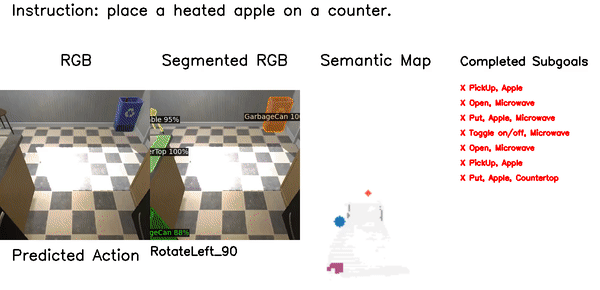FILM: Following Instructions in Language with Modular Methods
Recent methods for embodied instruction following are typically trained end-to-end using imitation learning. This often requires the use of expert trajectories and low-level language instructions. Such approaches assume that neural states will integrate multimodal semantics to perform state tracking, building spatial memory, exploration, and long-term planning. In contrast, we propose a modular method with structured representations that (1) builds a semantic map of the scene and (2) performs exploration with a semantic search policy, to achieve the natural language goal. Our modular method achieves SOTA performance (24.46 %) with a substantial (8.17 % absolute) gap from previous work while using less data by eschewing both expert trajectories and low-level instructions. Leveraging low-level language, however, can further increase our performance (26.49 %). Our findings suggest that an explicit spatial memory and a semantic search policy can provide a stronger and more general representation for state-tracking and guidance, even in the absence of expert trajectories or low-level instructions.
PDF Abstract ICLR 2022 PDF ICLR 2022 Abstract


 ALFRED
ALFRED